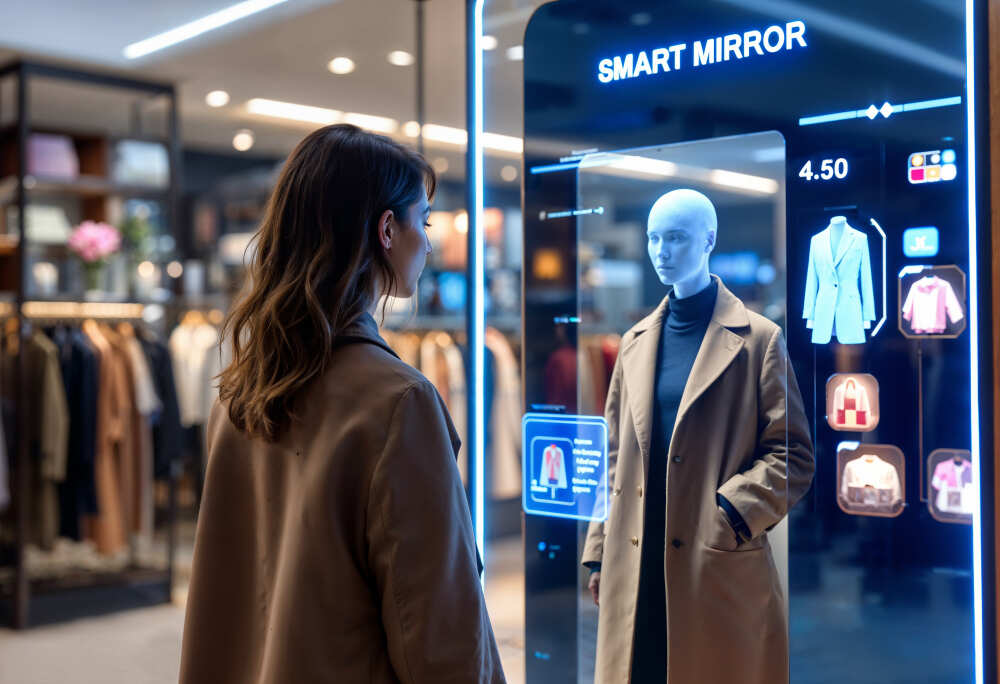In the era of digital transformation, businesses are constantly seeking innovative ways to enhance customer engagement and improve user experience. One such groundbreaking technology making waves across industries is Digital Twins. Originally utilized in manufacturing and engineering, Digital Twins are now playing a significant role in shaping consumer interactions across retail, healthcare, smart cities, and beyond. In this blog, we will explore how Digital Twins are revolutionizing consumer experiences and why businesses should leverage this technology to stay competitive.
What is a Digital Twin?
A Digital Twin is a virtual representation of a physical object, process, or system that updates in real time based on data from sensors, analytics, and machine learning. This technology enables businesses to simulate, analyze, and optimize real-world experiences before they occur, allowing for more personalized and predictive customer interactions.
By bridging the physical and digital worlds, Digital Twins facilitate enhanced decision-making, operational efficiency, and improved consumer satisfaction.
How Digital Twins Are Transforming Consumer Interaction
1. Personalized Shopping Experiences
Retailers are leveraging Digital Twins to create personalized shopping experiences. By modeling consumer behavior, preferences, and past purchase history, businesses can predict what products customers are likely to buy and offer tailored recommendations.
For instance, virtual fitting rooms powered by Digital Twins allow customers to try on clothes or accessories in a digital environment before making a purchase. Brands like Nike and Sephora have already integrated Digital Twin technology to offer augmented reality (AR)-driven experiences, enhancing consumer satisfaction and reducing product returns.
2. Enhanced Customer Support & Virtual Assistants
Digital Twins enable brands to simulate and understand customer interactions better, leading to improved customer support. AI-driven chatbots and virtual assistants can leverage Digital Twin models to provide real-time, context-aware assistance, resolving customer queries efficiently.
For example, telecom companies use Digital Twins to map network performance in real time. If a consumer faces connectivity issues, the virtual twin of the network infrastructure helps pinpoint the problem and suggest immediate solutions, significantly reducing downtime and frustration.
3. Smart Homes and IoT-Driven Consumer Experiences
With the rise of smart home technology, Digital Twins are making homes more intuitive. Consumers can create a virtual replica of their homes, allowing them to test different smart device configurations before purchasing. Companies like Google and Amazon use Digital Twin technology to refine voice assistant interactions and improve home automation features.
For instance, a smart thermostat using Digital Twin technology can learn user preferences and adjust room temperatures accordingly. This predictive personalization improves consumer comfort and energy efficiency simultaneously.
4. Revolutionizing Healthcare with Personalized Treatment
Digital Twins are playing a crucial role in healthcare and personalized medicine. By creating virtual models of individual patients, healthcare providers can predict treatment outcomes, recommend personalized therapies, and improve patient care.
Pharmaceutical companies also utilize Digital Twins to simulate drug interactions and optimize dosages, reducing trial-and-error treatments. This advancement makes healthcare more precise, efficient, and consumer-centric.
5. Immersive Customer Engagement in the Metaverse
As businesses expand into the Metaverse, Digital Twins serve as the backbone for immersive digital experiences. Brands can create virtual showrooms, host interactive events, and allow consumers to engage with products in a hyper-realistic manner before purchasing.
For example, automotive brands like BMW and Tesla use Digital Twins to allow customers to configure and test-drive virtual car models, enhancing engagement and decision-making before visiting a dealership.
6. Smarter Cities and Improved Consumer Convenience
Digital Twins are revolutionizing urban planning and public services, making cities more consumer-friendly. By creating a real-time simulation of urban infrastructure, city planners can predict traffic patterns, optimize public transportation, and improve emergency response systems.
For instance, Digital Twins of smart cities can help citizens plan their daily commutes efficiently by analyzing real-time traffic data, reducing congestion, and improving overall convenience.
Business Benefits of Digital Twins in Consumer Interaction
Businesses that adopt Digital Twin technology stand to gain a competitive edge by:
- Enhancing consumer engagement through personalized experiences.
- Reducing operational costs by simulating real-world scenarios and optimizing resources.
- Improving product development by analyzing consumer feedback and virtual prototypes.
- Gaining valuable insights into customer behavior for targeted marketing campaigns.
- Increasing brand loyalty by delivering seamless and predictive consumer experiences.
Challenges and Future Outlook
While the adoption of Digital Twins offers numerous benefits, businesses must overcome challenges such as data privacy concerns, high implementation costs, and integration complexities. However, as AI, IoT, and 5G continue to evolve, Digital Twin technology is expected to become more accessible and scalable.
In the near future, we can expect Digital Twins to play a crucial role in hyper-personalized marketing, AI-driven e-commerce, and real-time consumer analytics, shaping the next generation of digital interactions.
Conclusion
Digital Twins are redefining consumer interaction by blending physical and digital experiences seamlessly. From personalized shopping and smart homes to advanced healthcare and immersive metaverse engagement, businesses can harness this technology to enhance customer satisfaction and drive innovation.
To stay ahead in this rapidly evolving landscape, brands must invest in Digital Twin technology and integrate it into their customer engagement strategies. If you’re looking for expert insights on how to implement Digital Twins in your business, explore our resources at ATZ Sales Tech.


